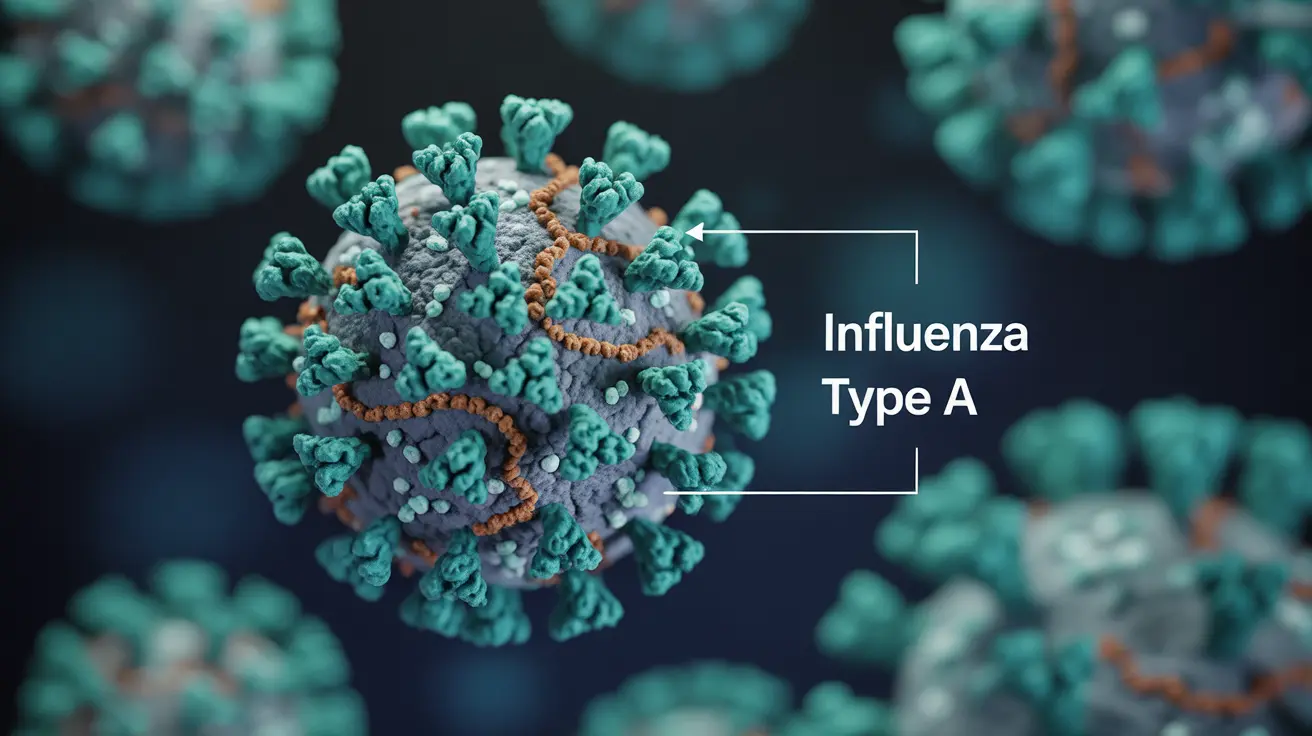Influenza type A is a highly contagious viral infection that can cause severe respiratory illness. As one of the main types of influenza viruses, it's responsible for both seasonal flu epidemics and occasional pandemics. Understanding its symptoms, treatment options, and prevention methods is crucial for protecting yourself and others.
Key Symptoms of Influenza Type A
Influenza type A typically presents with more severe symptoms than the common cold, often developing suddenly rather than gradually. Common symptoms include:
- High fever (usually 101°F or higher)
- Severe body aches and muscle pain
- Extreme fatigue
- Dry, persistent cough
- Headache
- Chills and sweats
- Sore throat
- Nasal congestion
Unlike a common cold, influenza type A symptoms tend to be more intense and develop more rapidly, often within 24 hours of exposure.
Diagnosis and Treatment Options
Healthcare providers typically diagnose influenza type A through physical examination and rapid influenza diagnostic tests (RIDTs). These tests can provide results within 10-15 minutes, helping determine the most appropriate treatment approach.
Antiviral Medications
The primary treatment for influenza type A includes antiviral medications such as:
- Oseltamivir (Tamiflu)
- Zanamivir (Relenza)
- Peramivir (Rapivab)
- Baloxavir marboxil (Xofluza)
These medications are most effective when started within 48 hours of symptom onset. They can help reduce the severity of symptoms and shorten the duration of illness.
High-Risk Groups and Complications
Certain individuals are at higher risk for developing serious complications from influenza type A:
- Adults 65 years and older
- Young children under 5 years
- Pregnant women
- People with chronic medical conditions
- Individuals with weakened immune systems
Warning Signs Requiring Medical Attention
Seek immediate medical care if experiencing:
- Difficulty breathing
- Chest pain or pressure
- Severe muscle pain
- Dehydration
- Confusion or sudden dizziness
- Severe vomiting
- Worsening of chronic medical conditions
Prevention Strategies
Preventing influenza type A involves multiple approaches:
- Annual flu vaccination
- Regular hand washing
- Avoiding close contact with sick individuals
- Covering mouth and nose when coughing or sneezing
- Staying home when sick
- Maintaining good overall health through proper nutrition and rest
Contagious Period and Precautions
People with influenza type A are typically contagious from one day before symptoms appear until 5-7 days after becoming sick. Some people, especially young children and those with weakened immune systems, may be contagious for longer periods.
Frequently Asked Questions
What are the common symptoms that help identify influenza type A compared to a common cold?
Influenza type A symptoms are typically more severe and onset more rapidly than a cold. Key distinguishing symptoms include high fever, severe body aches, extreme fatigue, and sudden onset of symptoms, usually within 24 hours of exposure.
How is influenza type A diagnosed and treated, including the role of antiviral medications?
Diagnosis is made through physical examination and rapid diagnostic tests. Treatment primarily involves antiviral medications like Tamiflu, which work best when started within 48 hours of symptom onset. These medications can reduce severity and duration of illness.
Who is most at risk for serious complications from influenza type A, and when should medical care be sought?
High-risk groups include older adults, young children, pregnant women, and those with chronic medical conditions. Seek immediate medical care for difficulty breathing, chest pain, severe muscle pain, confusion, or worsening of chronic conditions.
What steps can be taken to prevent getting or spreading influenza type A?
Prevention includes getting annual flu vaccinations, practicing good hand hygiene, avoiding close contact with sick individuals, covering coughs and sneezes, and staying home when ill.
How long is influenza type A contagious, and what precautions should be taken during that period?
The contagious period typically begins one day before symptoms appear and lasts 5-7 days after illness onset. During this time, stay home, limit contact with others, practice good hygiene, and cover coughs and sneezes.




